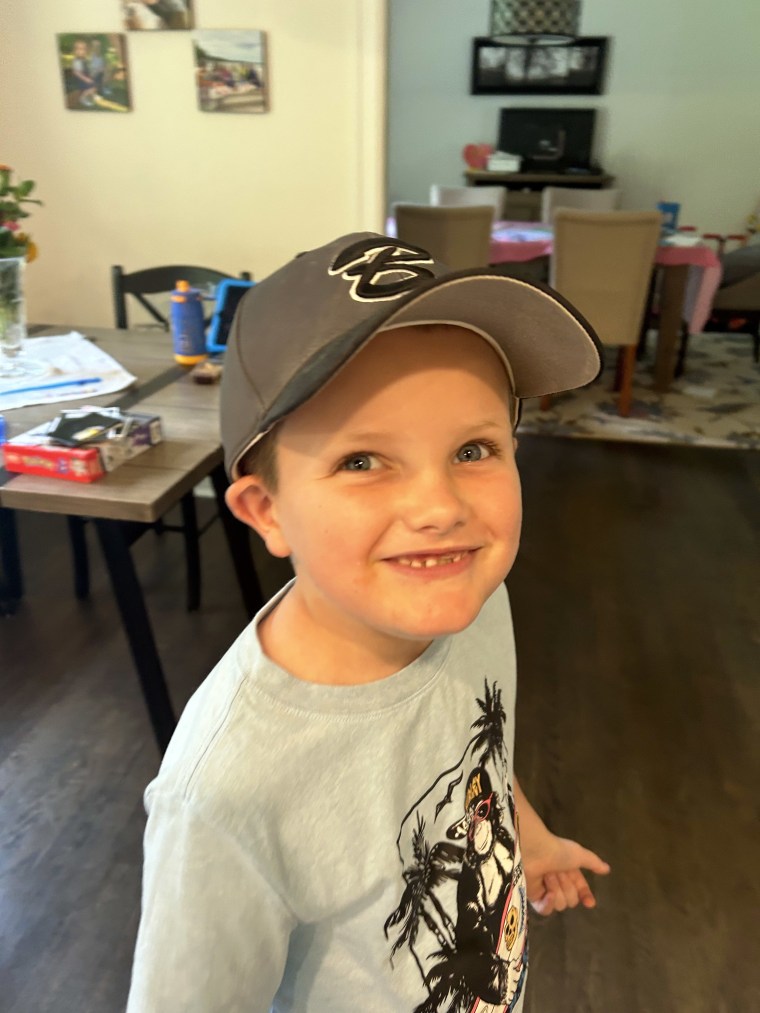At the age of four, Alex began experiencing chronic pain that kept him from playing with other children. Despite seeing numerous doctors, his condition remained undiagnosed, leaving his family frustrated and desperate for answers.
During the COVID-19 lockdown, Alex's mother, Courtney, bought a bounce house for him and his sibling. Not long after, Alex began showing signs of pain, which initially went unnoticed. The family’s nanny observed that Alex needed Motrin daily to manage his discomfort and prevent major meltdowns. Courtney then decided to investigate further.
As time passed, Alex developed other symptoms, including chewing on objects, which prompted a visit to the dentist. This marked the beginning of a long, challenging journey to uncover the cause of his pain.

A Breakthrough from an Unexpected Source: ChatGPT
Over three years, Alex saw 17 doctors, but none could provide a clear diagnosis. Courtney spent countless hours researching, seeking help from specialists, and even visiting the ER, but every visit resulted in a dead end.
In early 2023, Courtney turned to an unexpected source for answers: ChatGPT. Desperate and exhausted, she shared all of Alex’s symptoms and medical details with the AI platform, including his MRI results. After sifting through the information, ChatGPT suggested a diagnosis that resonated deeply with Courtney: tethered cord syndrome.
For the first time, the pieces began to fall into place.
The Search for Answers Continues
Initially, Alex’s parents thought his issues were dental-related, believing his molars or a possible cavity might be causing his discomfort. After ruling out dental problems, the family consulted an orthodontist who diagnosed Alex with a small palate, making it difficult for him to breathe at night. This led to the installation of a palate expander, which provided some relief, but the symptoms soon returned.
As Alex’s growth stalled, concerns deepened. A pediatrician suggested the pandemic may have affected his development, but Courtney wasn’t convinced. Then, more severe symptoms emerged, including severe headaches and imbalance between his left and right sides. After visits to neurologists, ENT specialists, and more, the family still had no comprehensive diagnosis.
A physical therapist suggested that Alex might have Chiari malformation, a brain condition affecting the area where the skull meets the spine. However, this diagnosis didn’t fully explain Alex’s symptoms, leading the family to seek out yet more specialists.
ChatGPT Provides Clarity
Feeling helpless, Courtney entered all of Alex’s medical information into ChatGPT, hoping for a breakthrough. After examining the MRI notes and noticing that Alex couldn’t sit crisscross, a significant sign of a structural problem, the AI suggested tethered cord syndrome.
Courtney joined a Facebook group for families dealing with this condition, and the stories she read mirrored Alex’s experience. She arranged a consultation with a new neurosurgeon, who confirmed the diagnosis, pointing out that Alex had spina bifida occulta and a tethered spinal cord.
Understanding Tethered Cord Syndrome
Tethered cord syndrome occurs when tissue in the spinal cord forms attachments that restrict its movement, causing it to stretch abnormally. It is often associated with spina bifida, a condition where the spinal cord doesn’t fully develop. Unlike typical spina bifida cases, Alex’s form of the condition—spina bifida occulta—was hidden, making diagnosis more challenging.
Dr. Holly Gilmer, a pediatric neurosurgeon who treated Alex, explained that doctors sometimes miss subtle indicators like dimples, birthmarks, or tufts of hair that can signal spina bifida occulta.
Moving Forward with Surgery
After the diagnosis, Alex underwent surgery to correct his tethered cord syndrome, and his recovery is ongoing. According to Dr. Gilmer, the surgery involved detaching the spinal cord from where it was stuck, releasing the tension that had caused Alex so much pain.
Alex remains an energetic and intelligent child who, despite the setbacks, continues to find joy in life. He’s had to give up certain sports, like hockey, but his creativity and adaptability keep him involved.
The Role of ChatGPT in Medical Diagnosis
ChatGPT, an AI program, draws from vast amounts of text data to make predictions and provide responses based on the information entered. Although it cannot replace the expertise of a medical professional, ChatGPT can be a useful tool for patients with complex conditions who are struggling to get answers. It offers insights that can complement traditional medical advice, helping to fill gaps in the diagnostic process.
Dr. Andrew Beam, an expert in machine learning and medicine at Harvard, describes ChatGPT as a "high-powered medical search engine." However, he also warns that it’s not without its limitations, as it can sometimes fabricate information or make errors.
Final Thoughts: Advocacy for Alex’s Health
Reflecting on the long and difficult journey to diagnosis, Courtney emphasizes the importance of advocating for one’s child. She hopes her story can inspire others who are facing similar challenges to keep pushing for answers.
“There’s nobody that connects the dots for you,” she says. “You have to be your kid’s advocate.”
(Meghan Holohan-Today.com)









